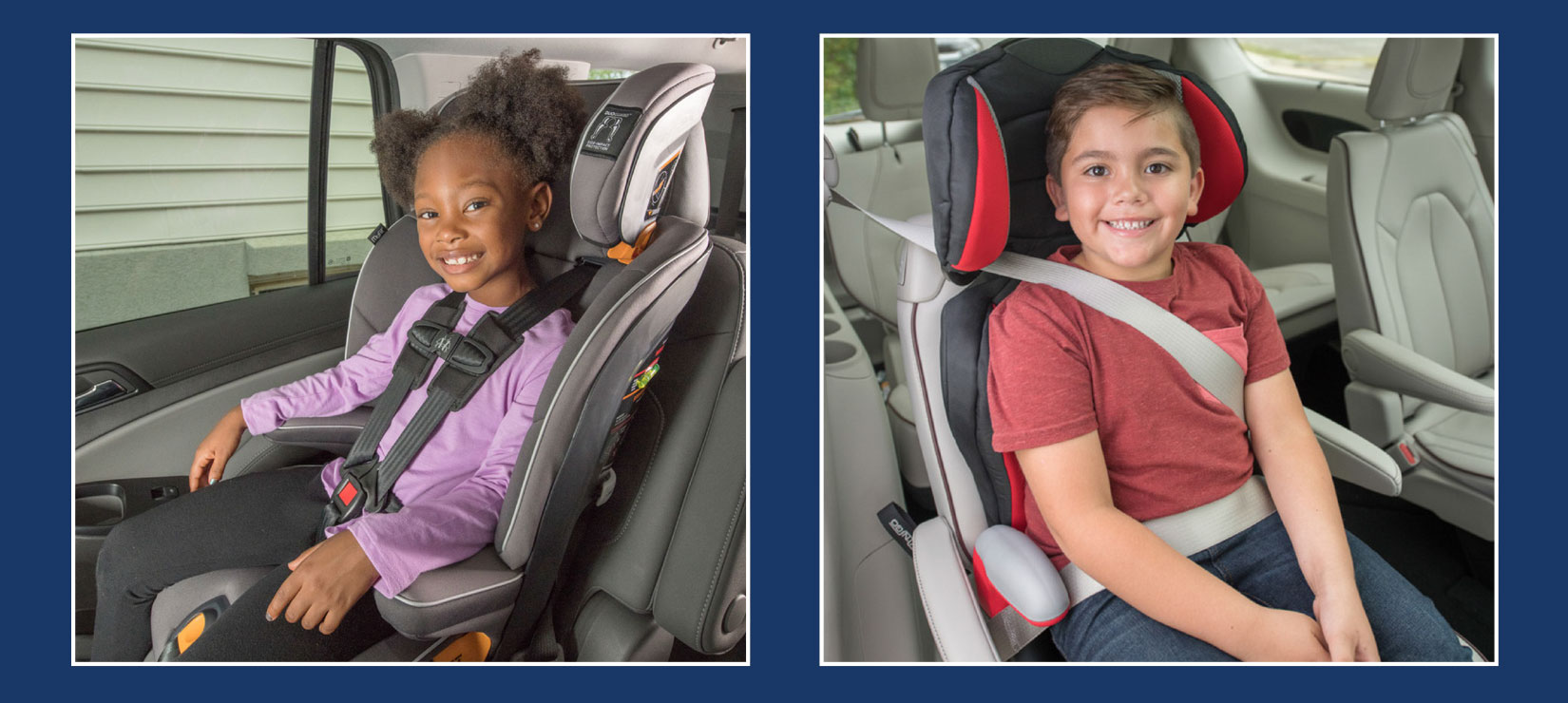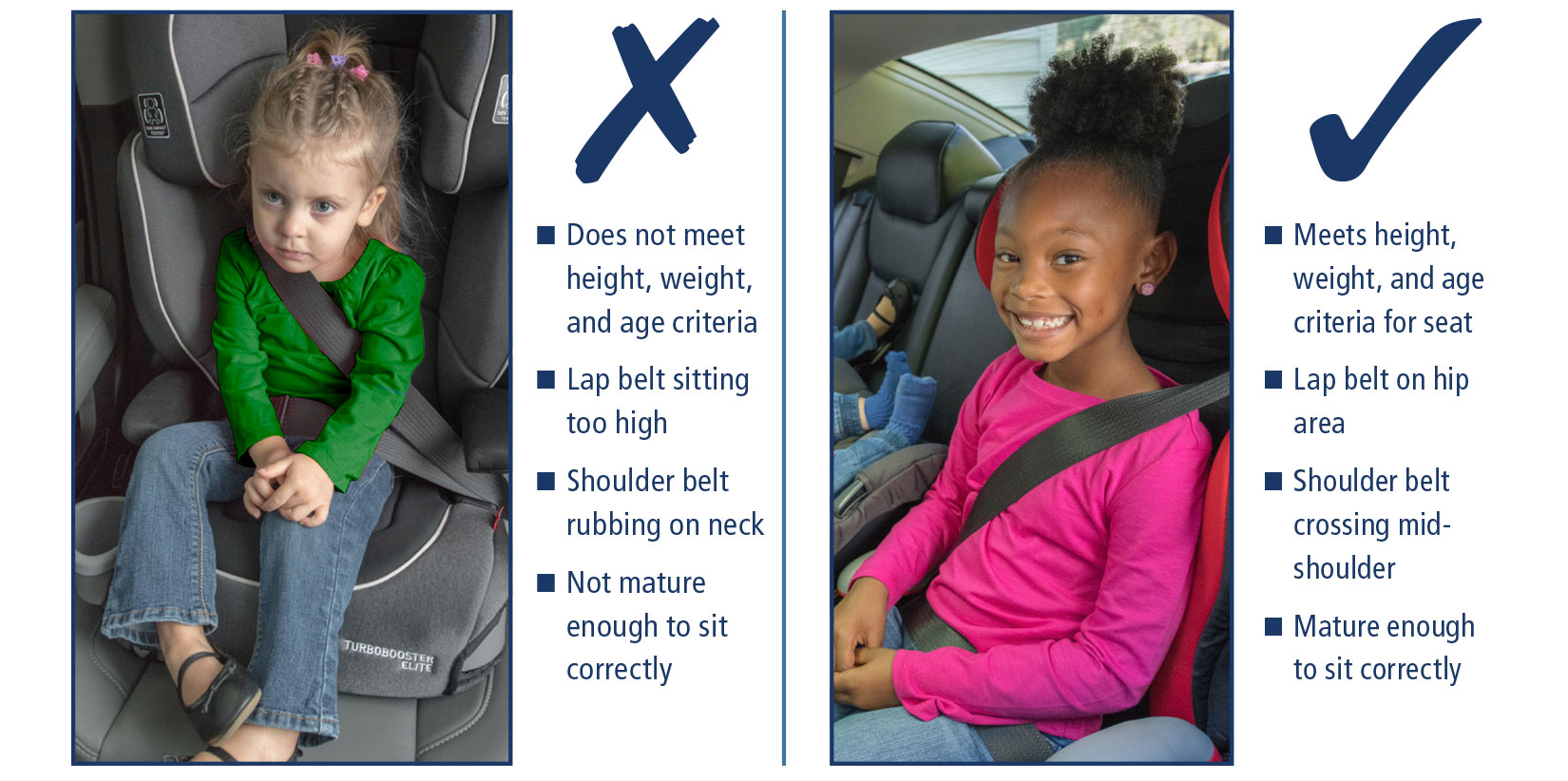Car Seat to Booster: There’s more to it than you think.
Booster seats are intended for older kids who are big enough and mature enough to sit correctly without a harness. For many kids, this may not be until they are 6 years old or older.

How are car seats and booster seats different?
Car seats and booster seats both protect kids, but they do it in different ways. Car seats are designed to protect kids by using the harness to keep them in the safest position. Booster seats use the seat belt to protect kids. Seat belts give kids more freedom to move around so they need to be mature enough to handle this responsibility. It is important that the seat belt works correctly, even when the child is asleep. The seat belt can’t do its job if it’s not in the right place.
For kids who aren’t able to sit correctly at all times, a height and weight appropriate car seat will offer them better protection.
When are kids big enough to use a booster seat?
No two kids are the same, so every child’s safety needs are a little bit different. Making the switch from a car seat to a booster seat isn’t just about size – it is also about maturity level. Kids should be able to pass all booster seat criteria before switching to a booster seat.
Is your child ready for a booster seat?

1. Child meets height, weight, and age requirements for the booster seat.
There are many different booster seats and they all have different height, weight and age requirements. Before considering a booster seat, make sure your child meets all of the criteria for using that seat. If you child does not meet all of the requirement, they are not ready to use a booster seat.
2. Lap belt crosses the body on the bones of upper thigh/hip
When sitting in a booster seat, the lap belt should fit across the child’s strong hip or thigh bones. Kids can be seriously injured in a crash if the lap belt sits across the stomach because it is not strong enough to handle the impact. If the lap belt doesn’t cross the child’s hip or thigh bones, they are not ready to use a booster seat.
3. Shoulder belt crosses mid-shoulder
The shoulder belt helps keep the upper body in place during a crash. If the shoulder belt does not fit correctly, children may be tempted to pull it aside or put it behind them, leaving the upper body without protection. If the shoulder belt does not cross at mid-shoulder, they are not ready to use a booster seat.
4. Child is mature enough to sit correctly at all times
Maturity is an important, but often overlooked, step in determining if a child is ready to ride in a booster sea. In order for the seat belt to do its job, the child needs to be in the correct position. If the child cannot sit correctly, when when sleeping (no slouching or leaning to the side), then they are not ready to use a booster seat.
Remember, all kids are different. Some kids may be able to ride in a booster seat before other kids of the same age or size.


